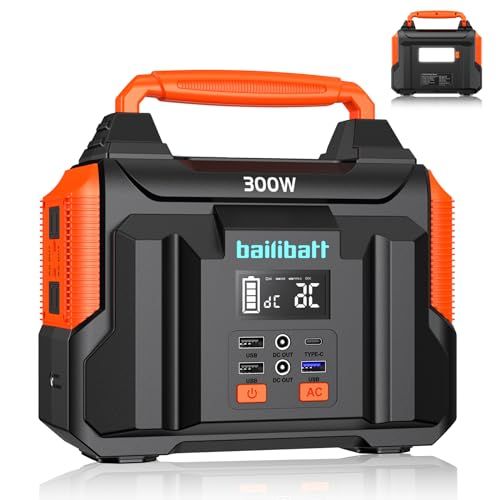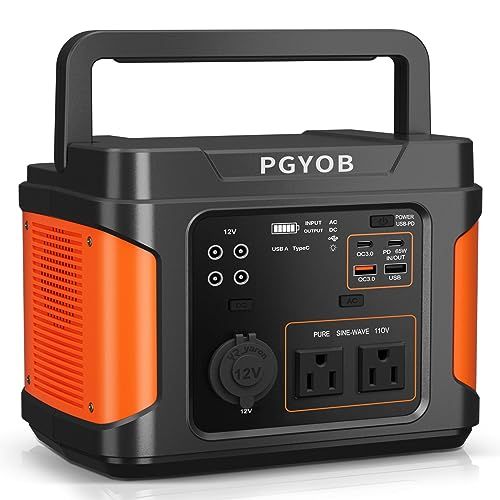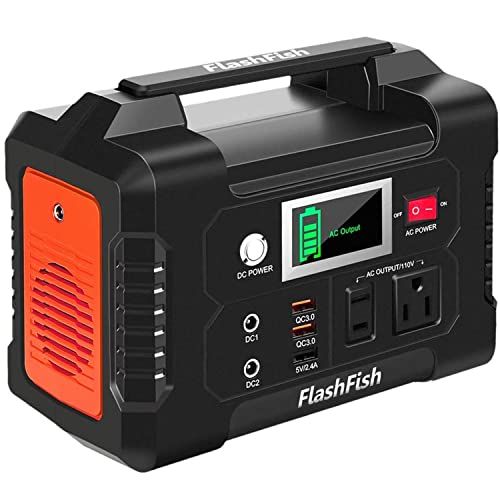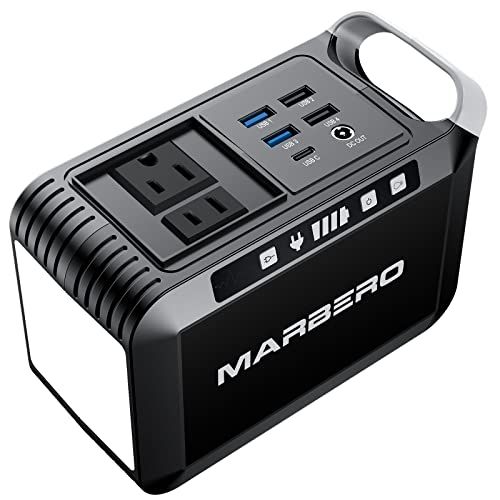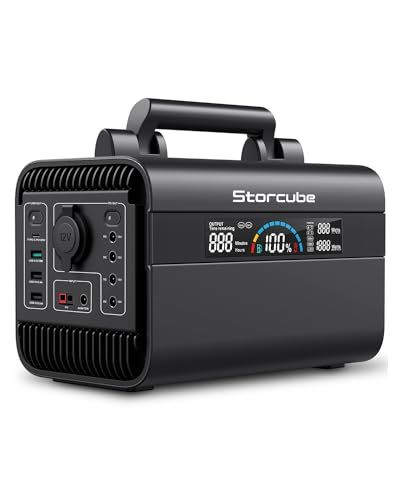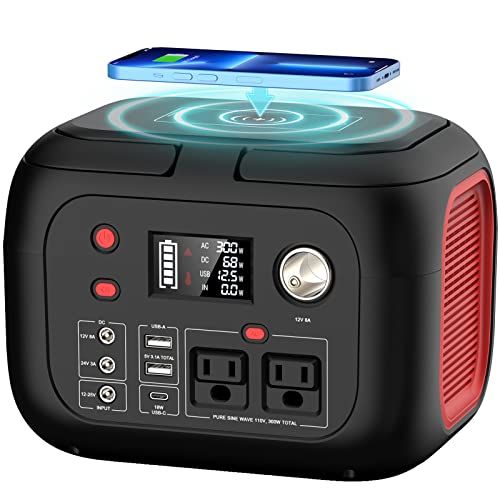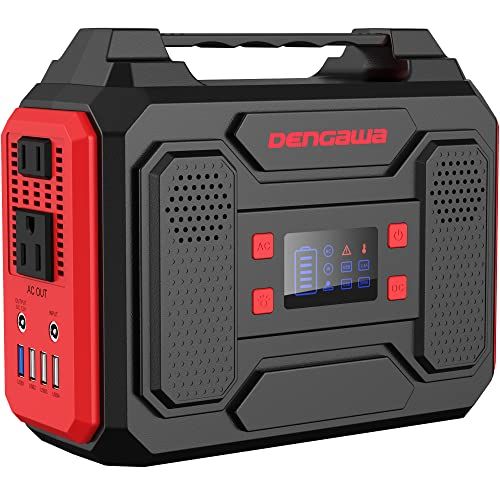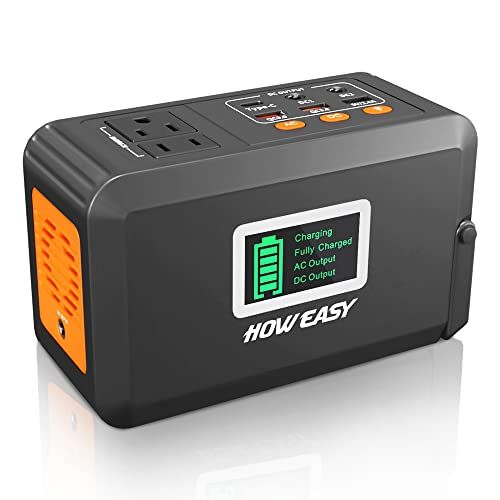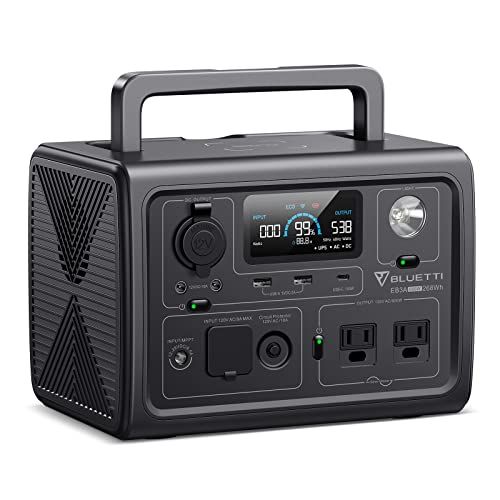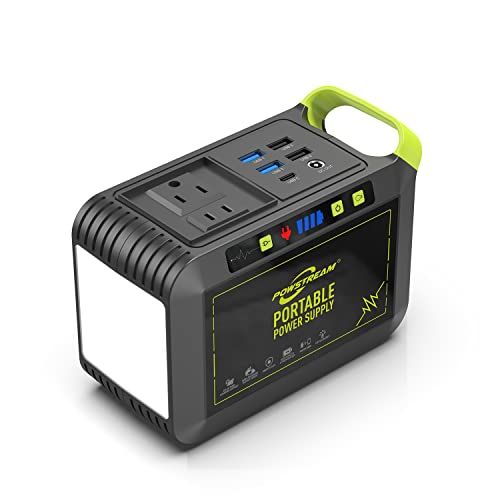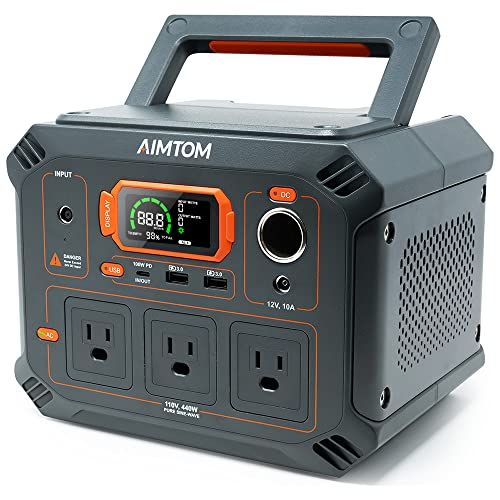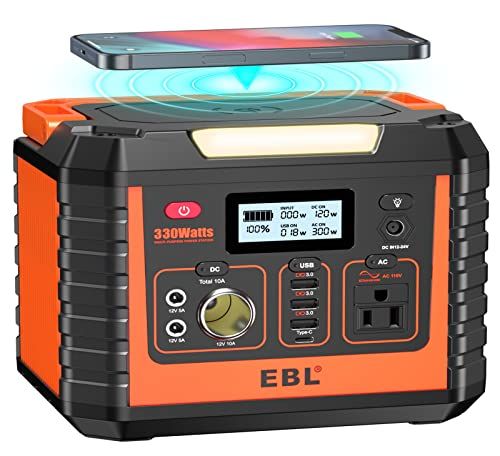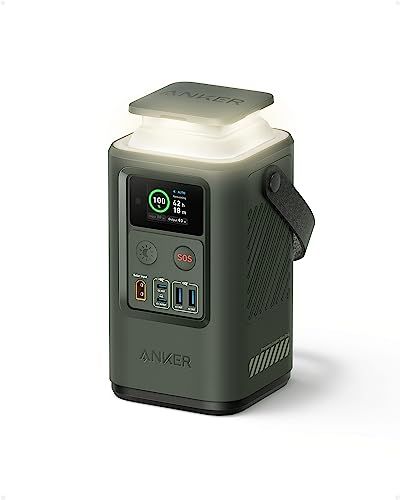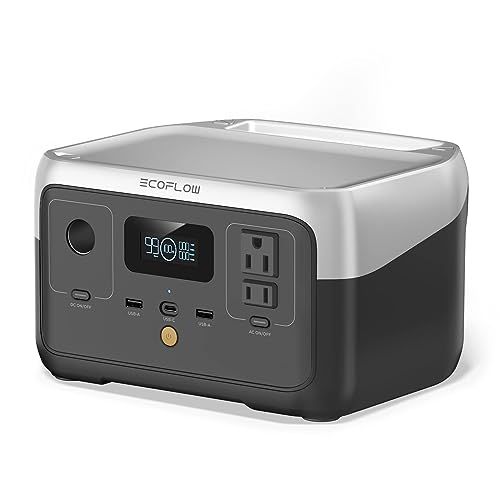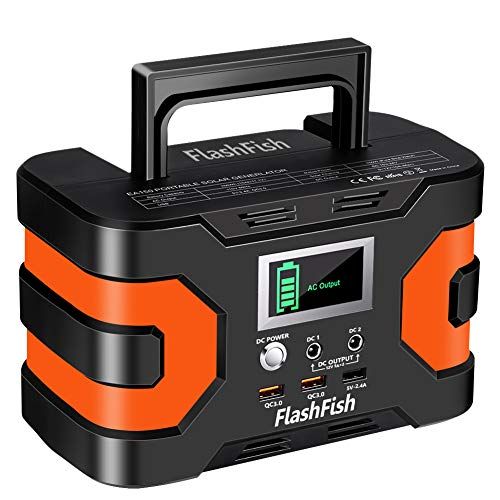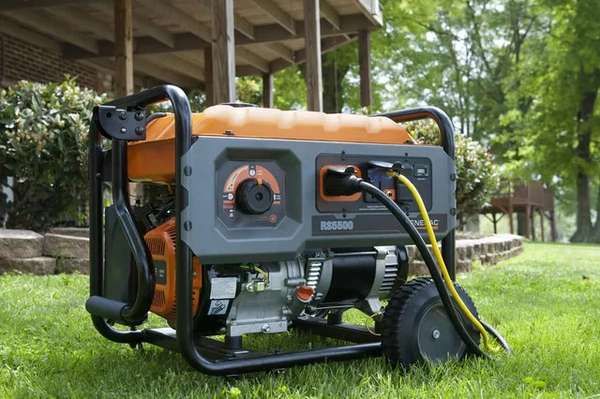
Portable power stations are essentially portable batteries with additional features that allow you to power and charge electronics on-the-go. Also known as power stations or portable generators, these devices come in different shapes and sizes but generally consist of a lithium ion battery pack, an inverter, and multiple outlets.
The key benefit of a portable power station is the ability to deliver power anywhere for camping, RVs, emergency backup, outdoor recreation, DIY projects and more. They allow you to access electricity without relying on the electrical grid. Most portable power stations can power small appliances and tools like mini-fridges, laptops, lights, TVs, CPAP machines and more. Their compact portable design lets you take power with you anywhere - you don't have to be near an electrical outlet.
Many portable power stations also feature built-in USB ports for charging mobile devices, 12V ports, wireless charging pads, and other convenience features. Their rechargeable battery can be replenished by plugging into an AC outlet at home, connecting to solar panels, or using the car charger in your vehicle. With the right power station, you can stay powered up for hours or even days depending on your power needs.
Types of Portable Power Stations
There are three main types of portable power stations:
Solar Generators
Solar generators collect energy from the sun using solar panels. The panels charge a built-in battery that can then be used to power devices.
Solar generators are a renewable energy source and don't require any fuel. However, they rely on sunny weather to charge.
Gas Generators
Gas generators use an internal combustion engine that runs on gasoline, diesel, or propane. This engine then generates electricity that can be used to power devices.
Gas generators offer high power output. But they require fuel to operate, generate noise and emissions, and need maintenance.
Battery Stations
Battery stations contain rechargeable lithium-ion battery packs. They can be charged by plugging them into a wall outlet or using solar panels.
Battery stations are lightweight and silent. But they offer less power output than gas generators and require recharging.
Key Features
Portable power stations offer several key features that make them useful for powering devices on the go:
Power output - Portable power stations are equipped with outlets, ports and cables to power or charge laptops, phones, small appliances like mini fridges and fans, and even some tools. Most provide between 100 to over 1000 watts of power. Higher wattages allow more devices to be powered at once.
Battery capacity - Batteries range from less than 100Wh to over 1000Wh. Higher capacities mean longer runtime before needing to recharge. Capacity impacts the number and types of devices that can be powered.
Outlets - Standard 110V AC outlets, USB ports, 12V car charging ports, wireless charging pads and more allow connection to many types of devices. More outlet options provides greater flexibility.
Display screens - LCD or LED screens show remaining battery percentage, watts and volts used, estimated runtime and more. This allows monitoring of power usage.
Portability - Compact, lightweight designs with handles allow easy transport for power on the go. Though units with higher capacity tend to be larger in size.
##Uses of Portable Power Stations
Portable power stations have many helpful uses for both emergency and recreational situations. Here are some of the most common uses:
Emergency Power
Having a portable power station on hand can be extremely valuable in emergency situations when the power goes out. It provides a backup source of electricity to charge phones, run medical devices, light rooms at night, power small appliances like a mini fridge to keep food cold, and more. This can help provide safety and comfort until the main power is restored.
Camping
Portable power stations are very popular for camping trips when you are off-grid and don't have electrical hookups. They can power things like lights, small devices, cooling devices, electric blankets, cooking appliances, and more. This makes camping much more comfortable and convenient.
Outdoor Events
Portable power stations are great for powering outdoor events where electrical access is limited. They can power sound systems, lighting, food service equipment, charging stations for devices, and much more at events like weddings, parties, concerts, outdoor movie nights, field work, and any occasion in a location without electrical infrastructure.
Home Backup
Some people keep a portable power station at home to provide backup power in case of an outage. This can help keep the essential appliances running like the refrigerator, some lights, internet, and electronics for communication and entertainment. Though not a whole home backup generator, it provides basic electrical needs.
Factors to Consider When Choosing a Portable Power Station
When selecting a portable power station, there are several key factors to take into account based on your needs and preferences:
Intended Use
What will you primarily use the power station for? Powering small electronics like phones and laptops? Running appliances like mini fridges or fans? Or more heavy-duty uses like power tools? This will determine how much wattage you need.
Will you use it for outdoor activities like camping or hiking where small size and weight are important? Or mainly emergency backup power at home where size doesn't matter as much?
Do you need to power sensitive electronics that require pure sine wave power? Some models offer this while others don't.
Power Needs
Consider the wattage rating and what you need to run. Higher wattage units can power more devices simultaneously.
Look at surge wattage too for power spikes when starting some devices.
How long do you need to power devices on a single charge? The battery capacity will determine run times.
Budget
Portable power stations span a wide range of prices based on size, features, battery capacity and included accessories. Determine how much you're willing to spend.
Generally, more expensive models have larger power capabilities, longer run times and more outlets.
Size and Weight
If using for outdoor use, look for compact, lightweight models you can easily carry. Large power stations can be 50 lbs or more.
For home use, size and weight are less important. Focus on power capabilities instead.
Some models have handles and wheels for easier portability.
Popular Brands
When shopping for a portable power station, you'll find there are a few major brands that consistently rise to the top in terms of quality, features, and reputation. Here's an overview of some of the most popular portable power station brands on the market today:
Goal Zero
Founded in 2009, Goal Zero is one of the original portable power station companies. They're known for their innovative products like the Yeti and Sherpa power stations. Goal Zero portable power stations feature lithium batteries and high-quality components. They specialize in solar generators that can be recharged via solar panels.
Jackery
Jackery is another leading brand founded in 2012 that offers a wide range of portable lithium power stations. They're known for their Explorer series which comes in various capacities from 160Wh to 1500Wh. Jackery focuses on providing affordable, lightweight and compact designs perfect for activities like camping and outdoor adventures.
Anker
Anker is a consumer electronics company that entered the portable power station market in 2021. Their Powerhouse line features compact, mid-range capacity options from 200Wh to 800Wh. Anker portable power stations are best for small electronics and short power outages.
EcoFlow
EcoFlow launched in 2017 and has quickly become a top contender in portable power stations. Their DELTA line ranges from 800Wh to 1800Wh with a modular, expandable design. Key features include fast recharge times, AC outlets, and an intuitive touchscreen display.
Bluetti
Founded in 2019, Bluetti manufactures heavy-duty portable power stations built for more extreme conditions. Their AC200 and AC300 models offer large-capacity lithium batteries from 2000Wh to 3072Wh. Bluetti power stations work well for construction, outdoor adventures, and emergency preparedness.
Pricing
Portable power stations come in a wide range of prices to meet different needs and budgets. Here is an overview of pricing tiers:
Entry-level ($100-$400)
The most affordable portable power stations typically range from $100-$400. They tend to have lower capacity batteries (100-200 Wh), less outlets and ports, and basic charge controllers. While they may lack some advanced features, entry-level models can still power small devices like phones, tablets, and fans. They are a budget-friendly option for lightweight emergency power needs.
Mid-range ($400-$800)
Mid-range portable power stations from $400-$800 offer more battery capacity (200-500 Wh), multiple AC and DC outlets, and charge controllers that can refuel faster. They have enough juice to power mini-fridges, CPAP machines, and larger electronics for several hours or days. Mid-range models balance price and performance for medium power needs.
High-end ($800+)
High-end portable power stations run $800 and beyond. Their large battery capacities (500+ Wh) can power appliances like televisions, small power tools, electric grills, and even run a mini-fridge overnight. Advanced charge controllers allow fast recharging from multiple sources like solar panels, car outlets, and wall adapters. High-end models are ideal for heavy-duty power needs, with premium features and maximum capacity.
The right portable power station for your budget depends on your intended uses and how much power you need. Consider starting small for basic needs or investing in a higher capacity model for more versatility and emergency backup power.
Safety Tips
When using a portable power station, following some basic safety tips can help prevent hazards and ensure smooth operation. Here are some key things to keep in mind:
Proper ventilation - Make sure the power station has adequate airflow and is not covered or crowded. Do not use it in an enclosed space. Overheating can damage the battery and electronics.
Avoid overcharging - Don't leave the power station plugged in after it's fully charged. Overcharging can reduce battery life. Follow the manufacturer's charging guidelines.
Don't exceed wattage capacity - Know the rated wattage of your power station and do not try to run devices that exceed this level. Drawing too much power can potentially damage the unit.
Use the right cables - Use only the cables that came with your power station, or good quality cables of the correct size. Faulty connectors can cause issues.
Check condition - Make sure the casing is intact with no cracks or leaks. Don't use the power station if the battery or electronics are damaged.
Keep it stable - Place the unit on a flat, even surface when in use and avoid tipping it over. The battery contents are hazardous if leaked.
Following basic electrical safety and the manufacturer's guidelines will help you safely power your devices off-grid with a portable power station. Taking care will extend its life and prevent dangerous malfunctions.
Maintenance
Taking care of your portable power station will ensure it lasts for years. Here are some tips for maintenance:
Cleaning
Wipe down the exterior of the power station with a soft, dry cloth. Avoid using liquids or abrasive cleaners.
Use compressed air to blow out any dust from the ports and vents. This will prevent overheating.
Never submerge the power station in water.
Battery Care
Avoid completely draining the battery. Charge it at least once every 3 months if not in regular use.
Store the power station in a cool, dry place. Temperature extremes can reduce battery life.
Recharge the battery at least once every 6 months to maintain optimal performance.
Storage
If storing for over 3 months, charge to 60%-80% to prolong battery life.
Disconnect any devices and turn the power station off.
Place it in a box or bag to keep dust out. Store it in a cool, dry place.
Firmware Updates
Check the manufacturer's website for any firmware updates. Keeping the software up to date improves performance and safety.
Carefully follow the instructions to update the firmware. This usually involves connecting to a computer via USB cable.
Updates help fix bugs, provide new features, and enhance overall functionality over time.
Conclusion
Portable power stations are ideal for both indoor and outdoor use. They can provide power for electric tools, camping equipment, and much more away from the electrical grid. There are several types like solar, battery, and gasoline and models with different features - varying capacities, outlets, portability, weather-resistance and charge time.
When choosing a portable power station, consider how much power you need, features like the outlet types, and the charging method that fits your lifestyle or activity. Compare prices across popular brands like Jackery, Anker and Ecoflow.
To get the most out of your portable power station, be sure to follow safety precautions. Only charge and store it in well-ventilated areas away from flammable items. Perform regular maintenance by cleaning the exterior and recharging it every 2-3 months when not in use.
With the right portable power station, you'll gain the freedom of electricity anywhere. Select a model with sufficient power capacity and features for your intended uses. Follow safety guidelines and proper care to ensure it performs well for years. Then enjoy the ability to power up a wide range of devices whether camping, DIY projects or weather emergencies.
Portable Power Stations comparison
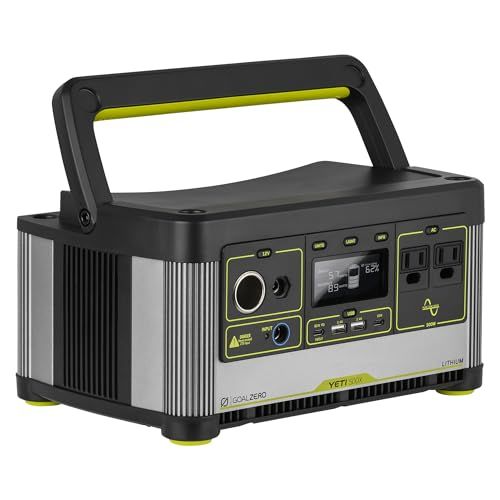 | 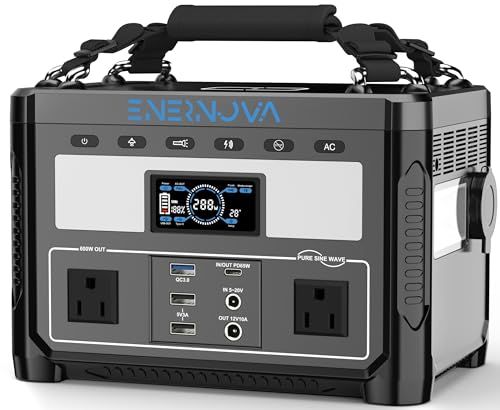 |  | 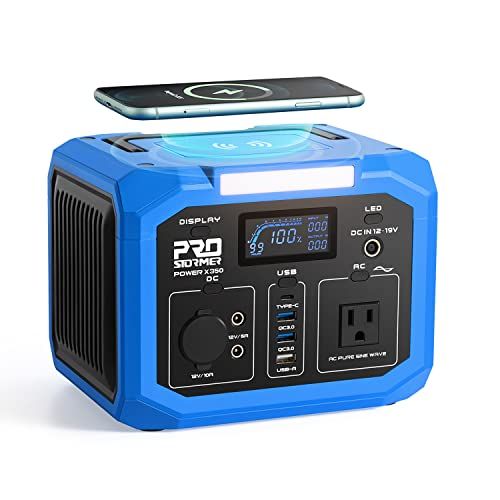 |  | |
|---|---|---|---|---|---|
| Model | 36100 | ETA | S89 | X350 | A1761 |
| Brand | Goal Zero | enernova | Takki | Prostormer | Anker |
| Weight | 12.9 pounds | 11.68 pounds | 1.98 pounds | 7.1 pounds | 26.5 pounds |
| Color | One Color | - | Orange/83Wh/22500mAh | Clear | - |
| Power source | Solar Powered | Solar Powered and Battery Powered | - | Solar Powered, Battery Powered | - |
| Item weight | 12.9 Pounds | 11.7 Pounds | - | 7.1 Pounds | - |
| Product dimensions | - | - | - | 12.2"L x 8.5"W x 7.5"H | - |
| Country of origin | - | China | - | China | - |
| Voltage | 12 | 110 Volts (AC) | - | 110 Volts | - |
| Battery capacity | 505 Watt Hours | - | - | - | - |
| Battery cell type | Lithium-Nickel Manganese Cobalt (NMC) | - | - | Lithium Ion | - |
| Special feature | Portable | Portable | Portable, Outlet, Cordless, Camping use | Portable | Portable |
| Maximum engine power | 1200 Watts | 1100 Watts | - | - | - |
| Output wattage | 300 | 600 | - | 500 Watts | - |
| Recommended uses | Camping | Camping | - | - | - |
| Fuel type | Electric | Electric | - | Liquefied Petroleum Gas | - |
FAQ
What is a portable power station?
A portable power station is a rechargeable battery pack that can provide power for your electronic devices when you're on the go or in case of an emergency power outage. Portable power stations contain built-in AC outlets, USB ports, and other features so you can charge and run small appliances, lights, phones, laptops and more. They're portable all-in-one power sources.
How does a portable power station work?
Portable power stations have a large internal battery that gets charged either by being plugged into an AC outlet at home, or via solar panels. Once fully charged, the power station can then provide power to your devices via its built-in AC outlets, USB charging ports, 12V car outlet, and other options. It's like having a small portable generator that runs off a rechargeable battery instead of gasoline.
What can you power with a portable power station?
Portable power stations are designed to power small electronic devices like phones, tablets, laptops, small medical devices, camping equipment like lights and small fans, and other items that don't draw a ton of wattage. Higher capacity models can even run mini-fridges, CPAP machines, and small TVs for a limited time. Check the wattage rating to know what you can power.
How long will a portable power station last on a charge?
Runtime depends on the battery capacity and how much you load the power station. A typical 100Wh portable station may give you 1-3 full phone charges, while larger 1000Wh+ models can run a mini fridge for 4+ hours or CPAP machine overnight. Check the estimated runtime specs for your particular usage.
What size portable power station do I need?
Consider the essential devices you want to power during an outage and their wattage needs, then choose a station with enough capacity to meet that. A 100Wh portable station is good for phone charging and camping. 200-500Wh can run lights, laptops, small medical devices. 1000Wh+ can handle mini-fridges, CPAPs, small TVs. Buy more capacity than you need so the battery doesn't drain as quickly.
How is a portable power station recharged?
There are a few ways to recharge a portable power station: by plugging it into an AC outlet at home, using solar panels to charge it directly from the sun, or using a 12V car charger while driving. Recharge times vary from about 2-10 hours depending on the model and charging method.
What are the main features of a portable power station?
Portable power stations will offer a variety of output options like AC outlets, multiple USB charging ports, a 12V car outlet, LED flashlights, and displays showing remaining battery percentage. Higher end models may have built-in solar panel inputs, WiFi monitoring, and the ability to chain multiple stations together for more power.
Are portable power stations safe to use?
Portable power stations from reputable brands are generally safe to use as long as proper operation guidelines are followed. They have built-in protection from short circuits, overheating, overcharging and over-discharging. Don't submerge them in water. Ventilate properly during charging and operation.
How much do portable power stations cost?
Basic portable power stations start around $100-$200 for smaller capacity models around 100Wh. Mid-range options from 200Wh-500Wh run $200-$500. Large capacity 1000Wh+ models designed for serious emergencies and off-grid use can cost $1000-$2000. Shop for a model with sufficient capacity for your needs at the best price.
What are the advantages of a portable power station?
Advantages include: portable all-in-one power source for camping/outages, rechargeable so no need for disposable batteries, cleaner and quieter than a gas generator, can recharge via solar panels for endless power, provides peace of mind for emergencies. Models with higher capacity run more devices for longer.

